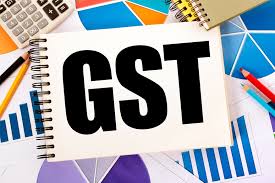EXPLAINED | How does the govt monitor profiteering after GST rates are cut?
On June 24, the National Anti-Profiteering Authority (NAPA) directed the Central Board of Indirect Taxes and Customs and Goods and Service Tax Officials to ensure that the recent GST cuts in essential Covid items is passed onto customers by retailers, suppliers and manufacturers.
At its meeting on June 12, the all-powerful Goods and Service Tax Council slashed the GST rates on a number of items crucial in the fight against COVID-19 pandemic. These include essential medicines, oxygen, oxygen generation equipment and related devices, and diagnostic and testing machine kits.
The items on which rate cuts were made include Remdesivir, Tocilizumab, medical grade oxygen, oxygen generator, ventilators, masks, COVID testing kits, oximeters, hand sanitisers, cremation furnaces, ambulances, temperature checking devices and others. These cuts are applicable till September 30.
Customers are protected by legal backing under Section 171 of the Central GST Act, which states that any reduction in rate of tax on any supply of goods or services or the benefit of input tax credit shall be passed on to the recipient by way of commensurate reduction in prices.
“The order issued by the NAPA is a step in the right direction. The government should give wide publicity to Section 171 of the CGST Act and educate the consumers of their rights against companies who are not passing on the benefit of reduction in GST rates on Covid items,” said Rajat Bose, Partner at Shardul Amarchand Mangaldas & Co.
Businesses dealing with medical supplies that have undergone a GST rate reduction need to ensure that they have adequate documentation to demonstrate that the rate cuts have been passed on to the consumers," said MS Mani, Senior Director at Deloitte India.
But why exactly does NAPA authorise officials to ensure that GST rate cuts are passed on to customers, how does it know that some suppliers are making unfair profits, and what punishment can be levied to them?
The process is initiated when a complaint is filed either by a consumer, or by any official from CBIC, customs department or a GST officer, if they think that the retail price of a product has not changed even after GST cuts.
“A formal complaint is filed to the state-level screening committee under NAPA. Every state has at least one screening committee. The complaint is a form which has to be filled and whoever has filed the complaint has to produce the invoice which is received while buying the said product,” said Bose.
Once the complaint is filed, the screening committee examines it, and if it thinks that there is a bonafide case of profiteering, it is then referred to the Director General of Anti-Profiteering, the senior-most official in this particular set-up.
As per the Rules 128 and 129 of the CGST Act, which guide the investigation process in case of profiteering complaints, the DG sends a notice to the retailer or supplier, first calling for their records on costs and pricing, and the company or entity is asked to explain how they have passed on the benefits.
“If the company can’t justify that then the DG has the power to impose penalty as well as refund the profiteered amount to the consumer welfare fund,” said Bose, adding that if a company does not agree with the decision, they can appeal to the NAPA.
Bose said that in most cases complaints happen against retailers, and usually the retailer says that they sold it at the price set by the supplier or manufacturer. The investigation focuses on all aspects of the supply chain.
Process can be initiated without complaints as wellDeloitte’s Mani says even in cases where there are no formal complaints, GST authorities can start the process on a ‘suo moto’ basis, if they feel that the benefits are not being passed onto the customers
“They can ask for data from various stakeholders, and evaluate the data as to whether the price has gone down after the GST rate cut has been implemented,” he said.
Mani and Bose concur that the process has worked well so far, and that it is usually time bound with no delay.
Mani however says that officials could come up with a standardized methodology to calculate the quantum of anti-profiteering taking place where they can possibly have a methodology on how to compute the cost and how to determine whether it is passed on or not.
Anti-profiteering is a temporary measure. In an ideal world, prices should be determined by demand and supply, and tax authorities should not be doing price determination. But because there are many cases where the benefits have not been passed onto customers, so there is a need for this set up,” he said.
Download our App to get knowledge updates::: https://play.google.com/store/apps/details?id=com.app.gstmitra
Join Our Telegram Channel for more updates:https://t.me/praveengst




Comments
Post a Comment